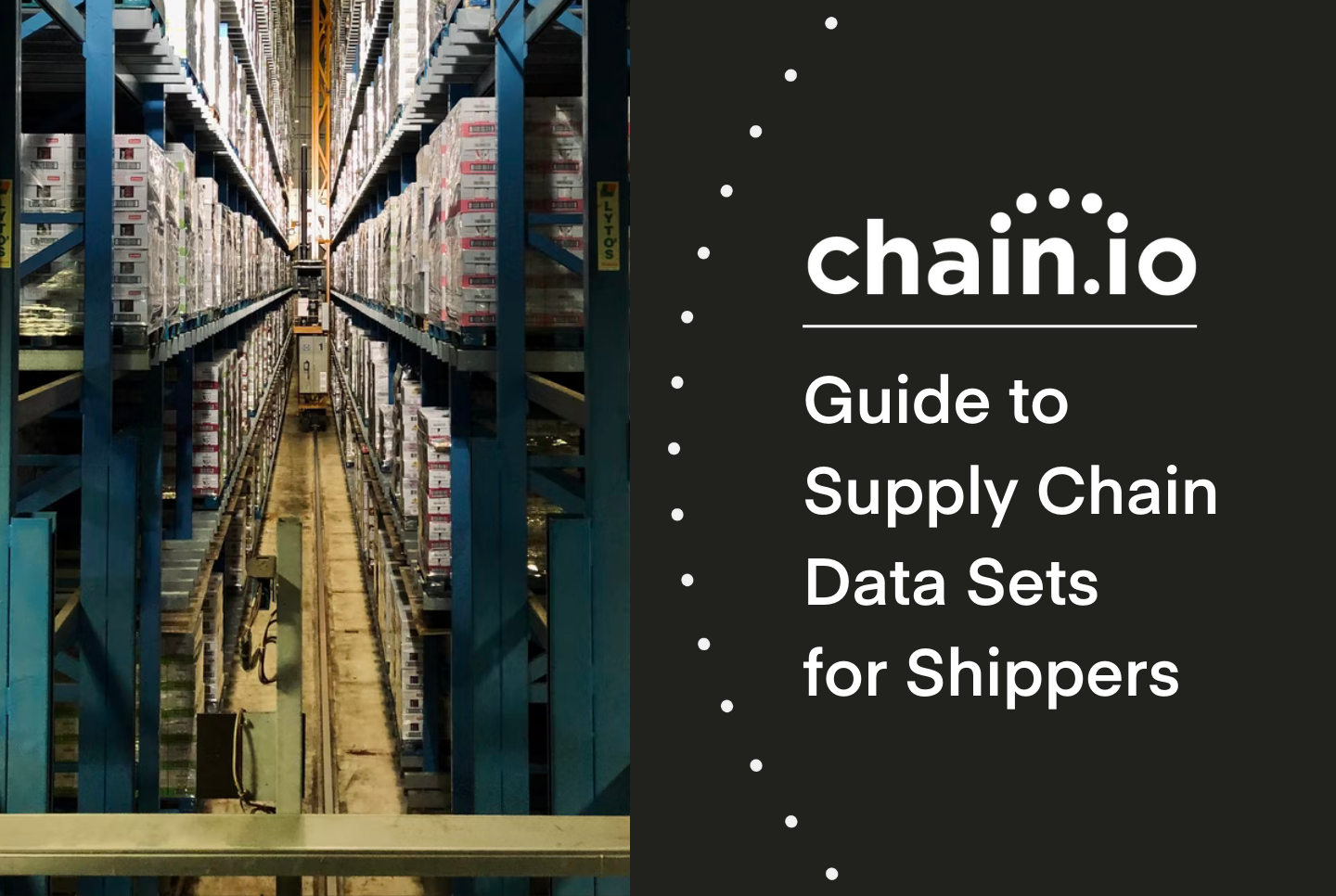
Managing inventory efficiently is a cornerstone of success for large international supply chain teams. Yet, without clear insights into actual inventory levels, planning orders and optimizing fulfillment becomes a guessing game—one that can lead to missed opportunities and operational inefficiencies.
As someone who ships goods around the world, you're likely working with multiple third-party logistics providers (3PLs) and warehouse management systems (WMS), each with its own set of data standards and formats. This disparity makes it exceptionally challenging to gain a unified view of your inventory.
When each provider submits information in a different format, your team spends considerable time just translating and reconciling data, rather than using that data strategically. The result? You're always a step behind in your inventory management, which directly impacts your order planning and fulfillment strategies.
Let’s dig into the ways data connectivity impacts your business, and how your team can standardize data to close your inventory and planning gaps.
The Consequences of Disparate Data
Without a clear understanding of what products are on hand, determining the quantity of goods that should be shipped out, and where they should go, becomes even more complicated for your team.
This lack of transparency can lead to two significant problems: overstocking and stockouts. Both are detrimental to your business's health and growth. Overstocking ties up capital that could be used more effectively elsewhere, while stockouts lead to missed sales and eroded customer trust. Then, instead of focusing on strategic planning and fulfillment, your team is bogged down by communications with providers, trying to understand a line item in a spreadsheet or resolve discrepancies in data reporting.
Without access to your data during inventory planning, your team also faces:
- Time-consuming data Translation and Reconciliation: When each 3PL submits data in its unique format, your team must spend considerable time translating this information into a standard format that your systems can understand. This process often involves complex data mapping and reconciliation, diverting resources from more strategic activities.
- Delayed Response Times: The time lag in integrating and understanding disparate data means your response to inventory changes is often delayed. For instance, if a shipment arrives early or late, the delay in updating this information can disrupt your entire supply chain, from warehousing to distribution.
- Increased Error Rates: Manually handling data from different sources increases the likelihood of errors. Misinterpretations or data entry mistakes can lead to incorrect inventory counts, resulting in overstocking or stock shortages.
- Inefficient Resource Allocation: Instead of optimizing inventory levels, your team's energy and expertise are consumed by data management, instead of focusing on improvement and growth initiatives.
- Supplier and Partner Misalignment: When different partners use different systems, it's challenging to synchronize operations effectively. This misalignment can lead to communication breakdowns and inefficiencies, compounding the difficulties in managing a global supply chain.
Optimizing Inventory with Real-Time Data
Having an up-to-date view into the flow of goods in and out of your inventory is essential for managing fulfillment accurately and efficiently. When you have real-time data available in your systems, your team can do their jobs better and in less time. Other benefits include:
Improved Demand Forecasting
With real-time data, you can monitor sales trends and customer demand as they happen, allowing you to adjust your inventory in real-time. This capability means you're better prepared for fluctuations in demand, helping you avoid overstocking or understocking. For example, if a particular product suddenly becomes popular, real-time insights can prompt you to increase orders promptly, ensuring that you meet consumer demand without delay.
Reduced Inventory Costs
Knowing exactly what is in your warehouse at any given moment allows you to reduce safety stock levels. You rely less on buffer stock because you have a precise, up-to-date understanding of your inventory needs. This reduction in safety stock translates to lower carrying costs and increased cash flow availability for your other critical business operations.
Enhanced Supplier Coordination
Real-time data gives you the visibility to coordinate more effectively with your suppliers. You can communicate your inventory needs more accurately and timely, which helps in maintaining smoother operations and building stronger relationships with your suppliers. This coordination is crucial during peak seasons or when dealing with supply chain disruptions.
Faster Response to Market Changes
The market is always changing, and the ability to quickly adapt is a significant competitive advantage. With real-time data, you can respond to new opportunities or challenges as they arise, not after the fact. This agility helps you maintain a competitive edge and ensures customer satisfaction by minimizing delays and optimizing delivery times.
Achieving Real-Time Supply Chain Data Access
Your team can leverage advanced tracking systems, centralized data platforms, cloud-based solutions, and automated analytics to gain real-time visibility and control over your inventory. Here are some practical steps that you can take to ensure your data is not only up-to-date but also actionable.
- Integrate Advanced Tracking Systems: Implement technologies such as RFID, IoT sensors, and GPS tracking in your logistics operations. These technologies provide continuous updates on the location and condition of your goods throughout the supply chain.
- Adopt a Centralized Data Platform: Use a supply chain integration platform like Chain.io to integrate data from various sources, including 3PLs, WMS, ERPs, and transportation management systems (TMS). Chain.io standardizes data and connects it between systems so your team has better control over your information to manage inventory and planning.
- Implement Automated Alerts and Analytics: Set up automated alerts for critical inventory thresholds or unusual patterns. Utilize analytics tools to interpret the data and provide actionable insights, helping you predict and plan for future needs based on historical data.
Standardizing Data for Streamlined Operations
By transforming how you receive and utilize data from your 3PLs and WMS platforms, your business can move from a reactive to a proactive operational strategy. You'll spend less time sorting out data discrepancies and more time driving strategic decisions that enhance your operational efficiency and market responsiveness.
By standardizing data from 3PLs, ERPs, TMSs, and WMS platforms, Chain.io ensures that you have the real-time insights necessary to make smart, timely decisions in your supply chain operations. With Chain.io’s shipping and receiving automation solution, you can connect systems to ensure that products being received in a warehouse are available for shipping, and that orders to pick and pack products, and then ship them, are immediately communicated to and registered by a warehouse operator without any risk of missed requests.

Chain.io’s purchase order automation solution lets you go beyond streamlining freight movement processes by connecting order management systems with ERPs or TMSs to allow granular item, color, and size level visibility into your inventory. Being able to track specific products and orders, and know where they are on a vessel, is key for many retailers, who are managing product demand in ever-changing markets.

Explore how Chain.io's supply chain integration platform can bridge the gap between what you know and what you need to know about your inventory. Book a meeting with our team or explore our solutions today.
Shipping and Receiving AutomationPO Management Automation


